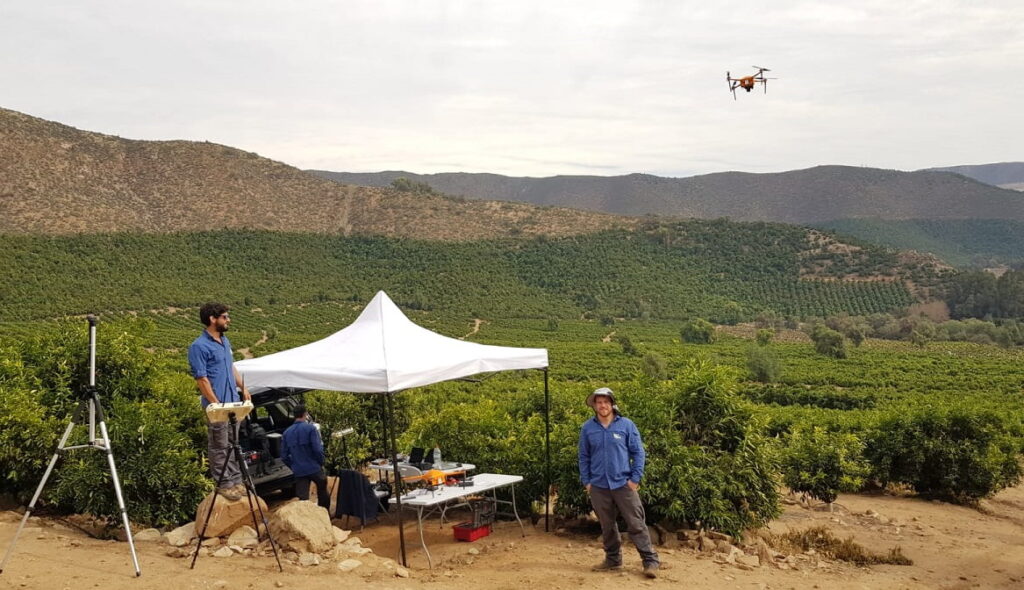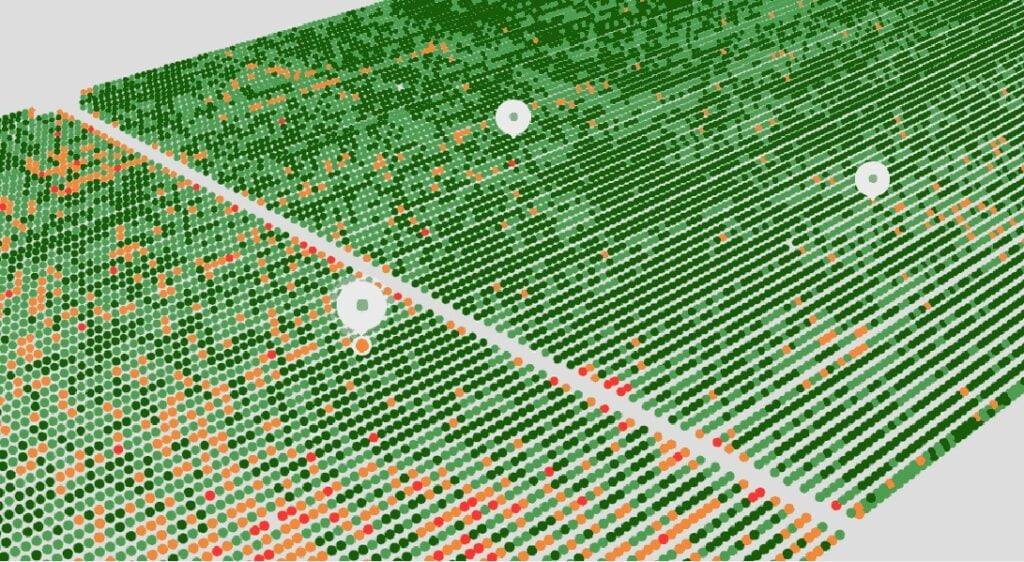The integration of technologies such as satellites, sensors, and drones into agriculture and farming has contributed to some dramatic changes in these fields over the past few years. The ability to observe crops from a bird’s eye view and detect ground conditions for better productivity adds perspectives that once seemed impossible.
These tools and others like data technologies have been helping farmers and agricultural professionals gain insights, making the world’s most important industry operate more smoothly and efficiently.
Israeli entrepreneur Israel Talpaz has had an eye on these developments for years. He grew up on a kibbutz in the Sharon region with a father who was a professor of agriculture at Texas A&M before becoming the deputy head of the Volcani Center in central Israel.

Talpaz worked in the government sector for 30 years, overseeing multifaceted, logistically challenging operations, before deciding to return to his farming roots with the insights he had gathered. In 2017, Talpaz teamed up with Barak Hachamov, an accomplished entrepreneur who recently served as an advisor for Google, to create SeeTree, an agriculture tech startup helping farmers manage and optimize the health and productivity of their trees.
Talpaz and Hachamov lead the young startup out of a beautiful, modern office overlooking the First Hebrew City, applying their business skills, logistical know-how, and passion for agriculture to solve some of the industry’s biggest problems—the modern management of trees and crops. The two knew that in Florida, for example, a state with a USD 10.7 billion citrus industry, a reported 80% of fruit trees were infected by deadly bacteria in 2015, leading to massive loss of production and revenue.
The founders communicated intensively with their early customers to understand what information drove their decisions and what it would take to provide a more complete picture to assist them. Concepts like optimizing irrigation on the level of an individual tree were previously inconceivable. Likewise, there was no way to accurately project crop yield before a harvest.
Initially, industry experts advised against the focus on trees. Row crops are thought to be far easier to observe and analyze than trees which are larger and far more varied. Nonetheless, Talpaz and Hachamov pressed ahead and decided to bring the benefits of data, business intelligence, and first-rate technology into the fields.

Talpaz observes that agriculture is very similar to defense. “A big farm has a lot of threats and a limited amount of resources to effectively respond to them,” he tells NoCamels. “Farmers need to detect problems as early as possible if they want to succeed. Up until today, they use their eyes and their feet to keep track of their crops,” says Talpaz.
Instead of using the good old “green thumb” that still rules much of the agricultural world, SeeTree uses technology to create a clear scoring system to evaluate the health of each individual tree as it produces.
“It was like trying to sell a thousand-dollar iPhone to someone in the mid-90s who had only ever seen a flip phone,” Talpaz tells NoCamels of his early efforts to convince farmers to take the quantum leap in monitoring and optimizing the production of fruit.
SeeTree raised its early funds from local investors and had a viable product that was used by farmers in a pilot in California within three months of founding. The startup has since generated considerable traction—a recent USD 30 million investment round attracted significant investors in the agriculture industry such as Brazilian company Citrosuco, one of the world’s largest orange juice concentrate producers; Orbia Ventures, the corporate VC arm of Orbia (formerly Mexichem), which acquired Israeli drip irrigation company Netafim; and Kubota, a Japanese manufacturer specializing in tractor and agricultural equipment. The lead investor in the round was the International Finance Corporation (IFC), the private-sector arm of the World Bank Group.
Following the successful pilot, SeeTree has experienced high demand and has been operating without a sales team.
“It’s all word of mouth. They call us. We are managing a waiting list to ensure that we can provide high-quality service and don’t overflow,” says Talpaz, explaining the critical importance of gaining the trust of farmers who have never employed advanced technology.
SeeTree’s intel network for trees
SeeTree’s solution relies on flying drones that provide high-resolution images and give a detailed aerial picture of orchards with a minimum of 700,000 trees. The drones scan 20,000 trees per hour and the images are analyzed carefully using machine learning to mimic an agronomist observing a tree. SeeTree gives each tree a score by checking for dryness, excess shade, weeds, bacteria, and other harmful actors that can interfere with growth. The score is comfortably accessible in a dashboard that the farmers use. This allows them to easily and intelligently activate their workforce and choose how to spend valuable resources such as water or chemicals.
The drones work in tandem with a rover that drives through the orchards at night while using special, contrast lighting and computer vision cameras to get a clear, ground-level picture of the trees. The footage provides a fruit count, a better picture of the tree’s health, and an accurate prediction of crop yields before harvest. This gives a comprehensive picture of each tree and allows monitoring that helps salvage fruit before it is lost and, by extension, profit. Additionally, knowing the exact conditions in which the best trees grow helps farmers learn what works and optimize their treatment.
The footage taken by each rover produces one terabyte of data per night, requiring advanced connectivity and cloud storage. The data from the rovers and drones is used in Israel by imagery analysts, software developers, and data scientists who manage the models that process the data. The teams then provide an aesthetic and intuitive platform for farmers to study their orchards down to the resolution of a single tree.
“It’s like an intelligence desk for farmers,” says Talpaz.
The future of agtech
The insights gathered and provided by SeeTree are promising to an industry that has been rather slow to massively adopt advanced tech.
Farmers can now ask questions they didn’t know they could ask: How much viable fruit is growing in each section of an orchard or on a given tree before harvest? Where can early signs of bugs and bacteria be spotted? Which are the first areas that require manual labor to remove weeds or dead trees?

SeeTree currently has offices in Brazil and California to serve some of the world’s largest fruit-producing markets in North and South America. With its new funding, SeeTree says it plans to make high-impact improvements on its current offerings that will go toward enhancing the data-collecting operations, employing drones and rovers to capture more footage at once and operate for longer. In addition, there are plans to automate key elements of the service, allowing for swift growth as the startup expands into markets such as Europe and Southeast Asia.
With its unique solution, SeeTree is in the process of letting farmers worldwide reimagine what it means to manage an orchard.
This article first appeared in NoCamels, which covers innovations from Israel for a global audience.

